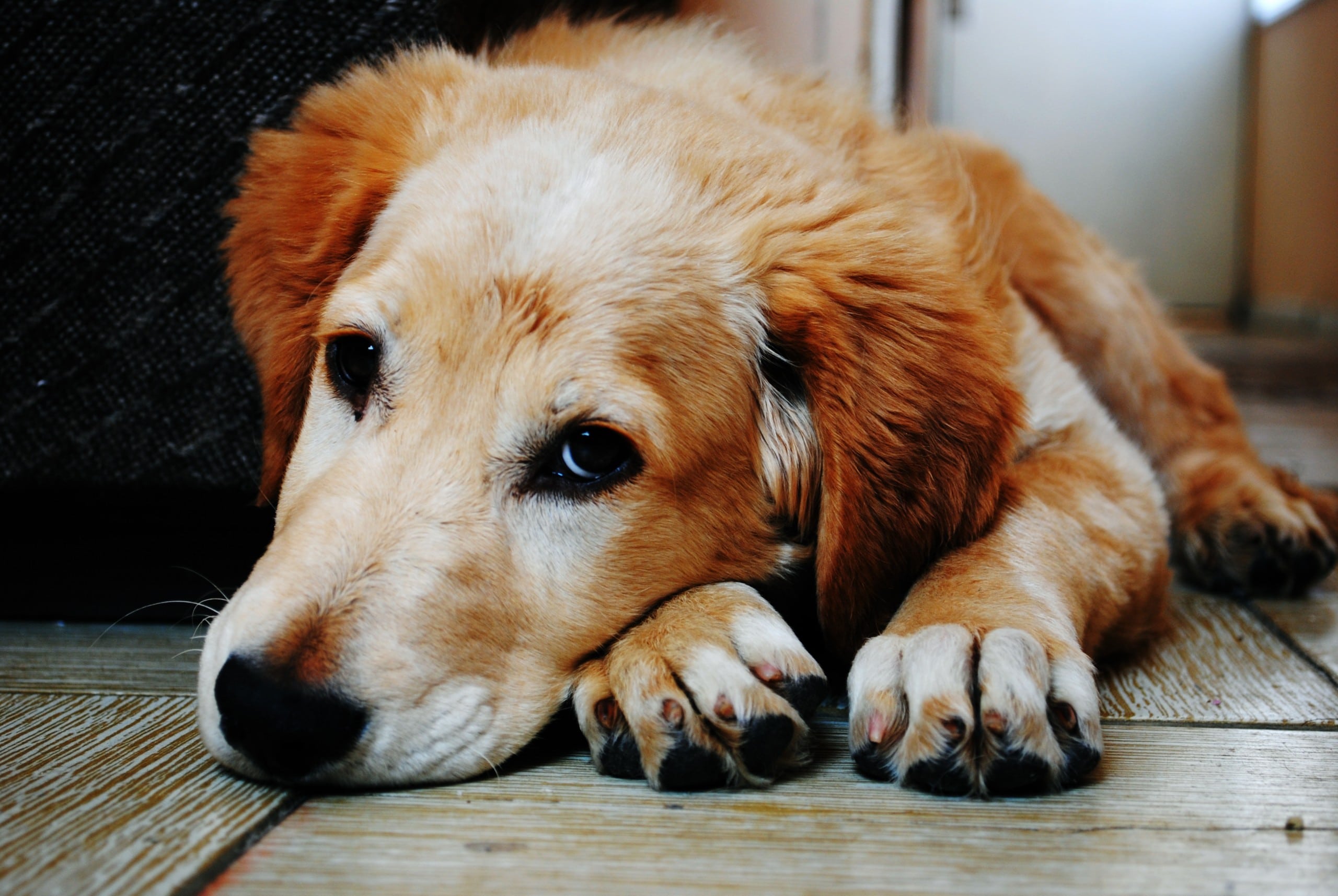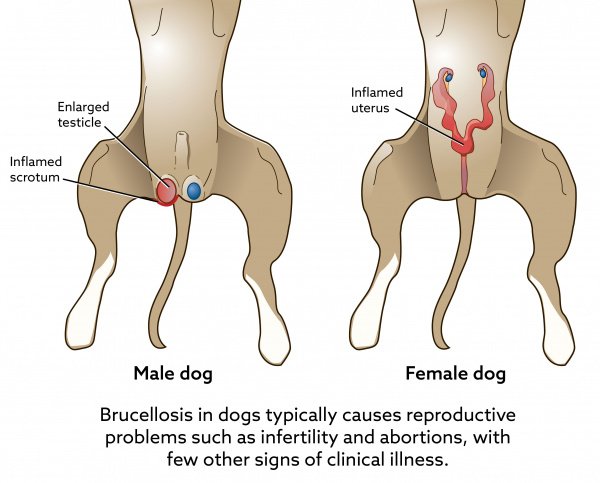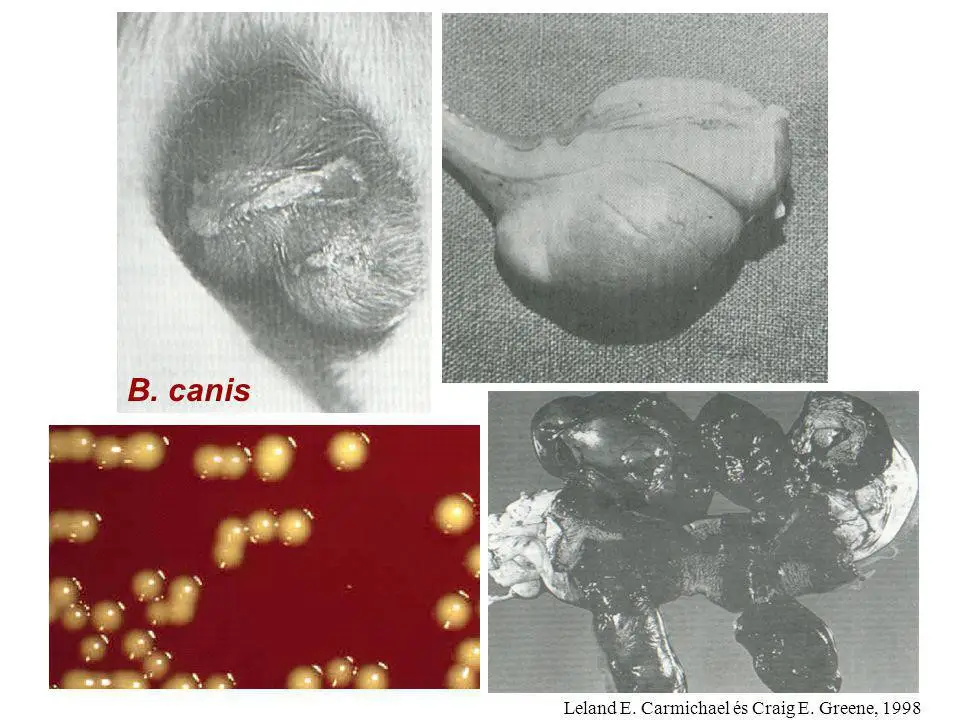Table of Contents
Brucellosis In Dogs- Symptoms, Causes, Diagnosis, And Treatments!
Is brucellosis in dogs dangerous? Here’s all you need to know!
Brucellosis is a bacterial disease that infects various animals, including humans. It is a contagious disease. A particular type of brucellosis that affects dogs causes their reproductive organs to inflate. Sometimes the spleen and liver are also affected. Brucellosis is most common in adult dogs that are “intact,” which means they haven’t been spayed or neutered.
The most common signs of brucellosis are infertility, discharge from the uterus in female dogs, an enlarged scrotum in male dogs, stillbirth or miscarriage, and swollen lymph nodes. If your dog is sterilized or neutered, the disease is unlikely to be a worry. Still, if you intend to breed your dog, you must be aware of the signs and treatment of this venereal disease.
What Is Brucellosis?

There are numerous Brucella bacterium species. B.canis is the most prevalent pathogen infecting dogs. Other Brucella species commonly infect goats, pigs, cattle, and sheep. The infection affects the reproductive system in most animals, producing spontaneous abortions, infertility, stillbirths, and inflammation of the reproductive organs.
When a dog is infected with Brucella, it takes around three weeks for the germs to be found in the dog’s blood. Brucellosis usually affects the dog’s reproductive organs, although it can also damage the spleen or liver. Inflammation of the eyes, joints, or spine occurs less frequently. The disease is known to cause swollen lymph nodes, but the infected dog does not appear to be seriously ill.
Symptoms of Brucellosis in Dogs
A dog owner might not know their dog has brucellosis if they don’t use the dog for breeding or if the dog doesn’t show any apparent signs of infection. But dog breeders need to watch for signs that their dogs have the disease.
Symptoms
- Rash on the scrotum
- Shrunken testicles
- Infertility
- Swollen testicle or scrotum
- Obstacles to pregnancy
- Vaginal discharge
- Enlarged lymph nodes
- Giving birth to a stillborn puppy
- Miscarriage 45-59 days into pregnancy
- Giving birth to a puppy that dies a few days after birth
- Giving birth to a stillborn puppy
- Giving birth to a brucellosis +ve puppy.
Most brucellosis symptoms differ between males and females because they have different reproductive organs. However, male and female dogs with this disease may have swollen or enlarged lymph nodes.
Male dogs who haven’t been neutered have two testicles in their scrotum. When infected by brucellosis, one of the testicles can swell due to epididymis inflammation. A rash on the scrotum is also possible. The testicles may even atrophy or shrink in chronic, untreated brucellosis instances. Finally, a Brucella infection can render a male dog sterile.
If a female dog that hasn’t been spayed gets brucellosis, it may have trouble getting pregnant or become sterile. If Brucella-infected female dogs get pregnant, many fetuses will die, usually between the 45th and 59th day of the pregnancy. (A dog’s pregnancy lasts an average of 63 days.)
The female dog could also give birth to stillborn puppies or puppies who die a few days later. If the puppies live, they may have brucellosis. A female dog with brucellosis will often also have discharge from the uterus.
Types of Brucellosis in Dogs

Brucella has a few different strains, but your dog is most likely to have Brucella Canis. We’ll talk about other kinds below:
- Brucella canis (B.canis) – very common in dogs
- Brucella abortus (cattle)
- Brucella melitensis (sheep & cattle)
- Brucella suis (pigs)
Even though all of these types can be passed on to dogs, it often doesn’t happen. All strains can also spread from animals to people. Brucella is very contagious and can be found in the tissues after giving birth, having an abortion, or making love.
Causes of Brucellosis in dogs
The B.canis bacteria can be found in infected dogs’ sperm or vaginal discharge. There are also small bacteria in the dog’s saliva and urine. This makes it easy for the illness to spread to another dog since dogs tend to sniff and lick their genitalia and body fluids like urine. Dogs can also get brucellosis if they mate with a dog who already has it. Even the mucus membranes of a dog’s eyes can be infected with brucellosis.
Diagnosis: Brucellosis in Dogs
A dog that appears healthy but may have brucellosis will have a complete physical exam and history collected by a veterinarian. After collecting the blood sample, a rapid slide agglutination test (RSAT) will be performed. If the test results are negative, brucellosis is not the cause. However, if the RSAT is positive, more testing is required. If the RSAT is positive, an agar gel immunodiffusion test (AGID) is usually performed. This test can reveal a great deal about B.canis.
However, remember that the RSAT test cannot detect bacteria until at least three weeks after the dog becomes ill.
Because brucellosis in dogs is a public health issue, veterinarians are obligated to report all cases to their local health agency.
Brucellosis can be contracted through the tear ducts of the eyes.
Treatment: Brucellosis in Dogs
Unfortunately, while brucellosis can be treated but not eradicated, affected dogs are frequently destroyed due to the risk of transmission to people. If the dog’s owner chooses to treat their pet, one or more antibiotics will be given long-term, and testing will be repeated until the dog’s findings are negative. However, it is highly typical for a dog to test positive again, even with antibiotic therapy.
The diseased dog must be isolated on the owner’s property and kept separate from other dogs for the rest of its life. Neutering or spaying a brucellosis-infected intact dog will also assist in reducing the number of bacteria it sheds.
Recovery of Brucellosis in Dogs
When it comes to Brucella, prevention is everything. To avoid infection, make sure your dog and any dogs they are breeding have been tested for Brucella. However, suppose your dog has been identified with the bacterium. In that case, you must follow your veterinarian’s instructions to avoid further transmission.
The relapse rate is significant because your dog may have an infection in their joints, bones, bloodstream, or prostate gland and may shed the virus later. Because of this, complete healing is not possible, and veterinarians frequently suggest death.
Finally, suppose your dog is given antibiotics. In that case, they will have to be tested regularly for at least a year following the initial diagnosis. The dog may be on an antibiotic regimen for an extended time. You may not be given a treatment choice depending on your state’s legislation, and euthanasia may be the only alternative.
How to Prevent Brucellosis in dogs

The easiest way to avoid brucellosis is to have your dog spayed or neutered before adolescence. On the other hand, breeding dogs should have an RSAT test every three to six months and should only be bred if the result is negative. Before being allowed to interact with the other dogs at the kennel, new canines in breeding kennels should be confined for eight to twelve weeks and tested for brucellosis.
Can I Get Brucellosis From My Dog?
Brucellosis is a zoonotic illness, which means infected animals can spread the disease to people. Humans are most likely to develop brucellosis by drinking unpasteurized milk or cheese from sick goats or sheep. However, it is possible, though rare, for a human to contract brucellosis from a dog.
Unlike animals, humans with brucellosis frequently experience flu-like symptoms such as fever, weakness, and weight loss.
Individuals with impaired immune systems are most vulnerable to contracting B. canis from an infected dog. Even though the risk to healthy people is low, anyone who touches bodily fluids, fetuses, or the placenta of an infected dog should always wear gloves and wash their hands properly.
Brucellosis In Dogs- Final words:
While various forms of Brucella can infect your dog, Brucella Canis is the most common. This bacterium is usually spread during breeding and is passed on by an infected female. There are some brucellosis-specific symptoms to check for. Still, many of them are more widespread and may not indicate a serious concern.
FAQs

1. What are the signs of brucellosis in dogs?
Infected male dogs may have abnormally sized testicles (swollen or shrunken). Other signs of canine brucellosis include infertility, anorexia, weight loss, pain, lameness, incoordination, swollen lymph nodes, and muscle weakness.
2. Can brucellosis in dogs be cured?
Unfortunately, there is no sure cure for this condition in dogs. Antibiotics have a difficult time successfully penetrating cells and eradicating the disease. Long-term antibiotic combinations and neutering and isolating diseased dogs have been tried, but the infection frequently resurfaces.
3. How is brucellosis transmitted from dogs to humans?
Blood, milk, saliva, and stool from an infected dog are less typical routes of infection. Brucellosis can be transmitted from dogs to humans through contact with an infected dog’s birthing fluids and vaginal discharge during puppy birth.
4. Do dogs with brucellosis need to be euthanized?
Dogs who have multiple positive test results are usually euthanized. The state veterinarian where the dog(s) are held makes this judgment locally.
5. Can a neutered dog get brucellosis?
Even though breeding dogs are still most likely to get the disease, spayed or neutered dogs that live with or are kenneled near sick dogs can also get the bacterium and pass it on. This is because the bacterium is spread through body fluids.

